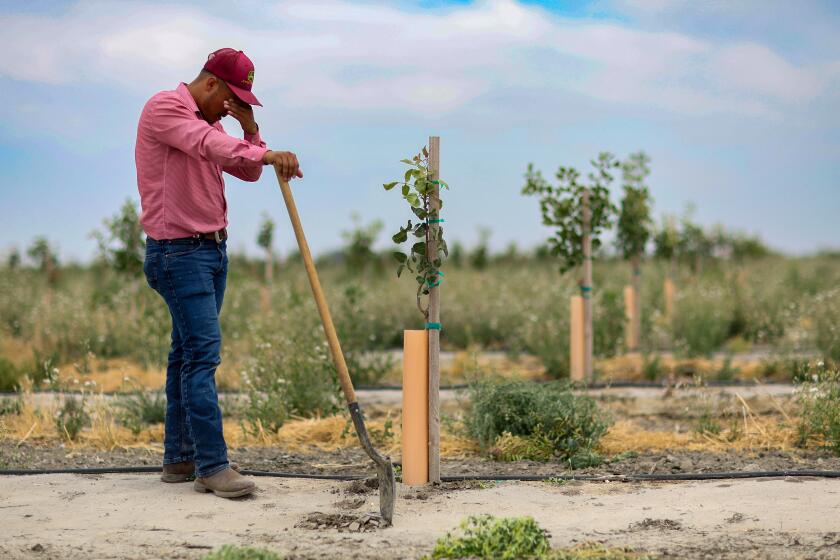Farmer Says He’s Tapped Out on Ideas
Farmer Craig Underwood is worried. He is finding it difficult to comply with orders from his water suppliers to cut back and with a county ordinance to reduce ground-water pumping.
“I’m worried every day,” Underwood said. “Water is all we worry about.”
Underwood uses about 2,000 acre-feet, or about 652 million gallons, of water each year to irrigate 600 acres of vegetables and lemon groves in Somis and Camarillo, consuming as much water today as he did five years ago before the drought began.
He is not alone. Farmers use 68% of the water consumed in Ventura County, and many say it is impossible to cut back.
Underwood taps into the Fox Canyon Aquifer for nearly 90% of the water used by his farms. Because of over-pumping of the aquifer exacerbated by the drought, growers are being told that they may have to reduce ground-water pumping by as much as 25%.
Underwood also buys imported state water from Camarillo through the Calleguas Municipal Water District, but the Metropolitan Water District of Southern California--which supplies Calleguas--has threatened to cut supplies to agriculture by 50% or more.
Besides his own wells and the water he gets from Camarillo, Underwood has two other sources of water. The Zone Mutual Water Co. charges $120 an acre-foot for ground water, 25% more than five years ago, he said. And prices for water from the Pleasant Valley Water District have more than doubled.
To further complicate matters, water levels in his own wells have dropped, increasing electricity costs to bring the water to the surface, he said.
Underwood said he is unable to use less water, since the drought has forced him to irrigate his crops year-round. Traditionally, farmers have depended on heavy rain during the winter months.
Another reason Underwood cannot reduce water use is that harmful mineral deposits already are forming in the soil because of dry conditions, he said. His lemon trees are showing signs that they have taken in too much salt: mottled leaves with light brown edges.
Underwood has tried to reduce consumption by converting to a more efficient irrigation system.
Last year, he spent $70,000 on a system to drip water slowly into the ground, replacing inefficient sprinklers.
If the MWD orders steep cutbacks, Underwood said, he may eliminate row crops or shift to vegetables that require less water, such as beans. To further cut back, he said he probably will not plant a 50-acre field in Camarillo this summer.
But he said he cannot further cut back water to his lemon groves, because they are already using the minimum amount needed to stay alive. If he must use even less water, he would have to cut down trees, he said.
“It’s like eliminating part of your family,” he said. “If it got to the point where you get a 50% cutback, does it mean that your family dehydrates, or do you get rid of some of your family?”
More to Read
Sign up for Essential California
The most important California stories and recommendations in your inbox every morning.
You may occasionally receive promotional content from the Los Angeles Times.






